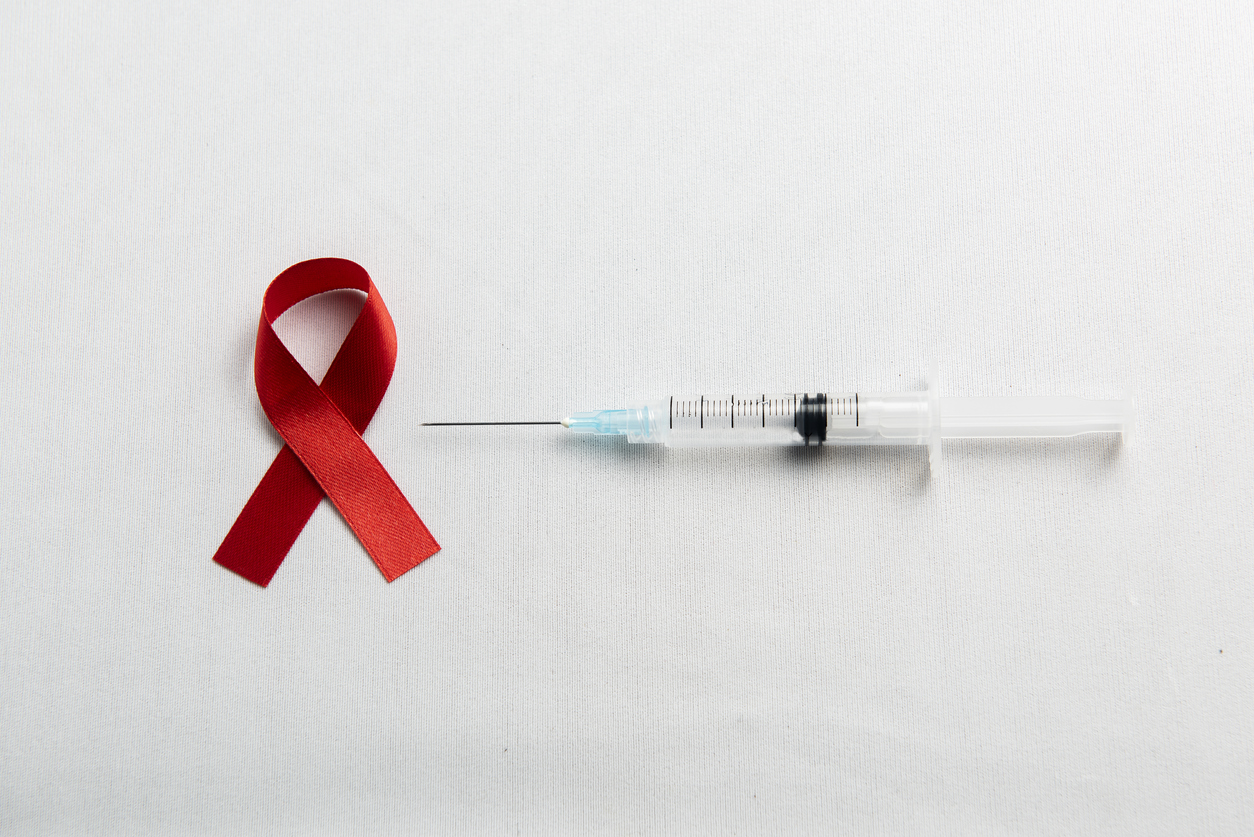2025-07-29
HBV: Immunity asleep or awakened?
Infectiology
By Ana Espino | Published on July 29, 2025 | 3 min read
#HepatitisB #Immunity #InfectiousDiseases
Chronic hepatitis B (CHB) remains a major public health issue, affecting more than 296 million people worldwide. Despite the implementation of effective vaccination campaigns, the hepatitis B virus (HBV) continues to cause severe liver complications, including cirrhosis and hepatocellular carcinoma.
Current treatment relies on two main approaches: pegylated interferon (PEG-IFN-α) and nucleos(t)ide analogues (NUCs). While these agents help control viral load and stabilize the disease, they lead to functional cure in less than 1% of cases per year. This low efficacy is largely due to their inability to restore a complete and lasting antiviral immune response. Indeed, many key cells of the immune system—particularly dendritic cells (DCs), monocytes, NK cells, and so-called unconventional T cells—exhibit deep phenotypic and functional alterations in patients with chronic HBV.
These immune dysfunctions represent a major obstacle to achieving a durable virological response and complete viral clearance. They reflect a virus-induced state of tolerance and the difficulty of reactivating an effective immune response despite treatment. This review explores how antiviral therapies affect the function of altered immune cells in chronic hepatitis B. By analyzing the effects of NUCs, PEG-IFN-α, and novel immunomodulators, the aim is to identify key immune targets for developing more effective future combination strategies.
This review analyzes the results of multiple clinical trials on the effects of PEG-IFN-α, various NUCs (entecavir, TDF, LDT…), and novel agents such as TLR agonists (e.g., selgantolimod), on the function of innate and unconventional T cells.
Studies first show that DCs are significantly altered in patients with CHB. A marked reduction in the expression of co-stimulatory molecules CD80/CD86 is also observed, along with weakened TLR activity and metabolic disturbances. PEG-IFN-α appears capable of partially restoring these functions, unlike NUCs alone, which remain largely ineffective in this regard.
Monocytes show overexpression of PD-L1 and IL-10, as well as a weakened TLR response. PEG-IFN-α shifts their transcriptional profile toward an IFN-α-type response, whereas TDF or ETV treatments show little reparative effect on these alterations.
Myeloid-derived suppressor cells, whose expansion inhibits T cell responses, decrease in frequency under PEG-IFN-α, suggesting a key role in restoring antiviral immunity.
NK cells show highly variable responses depending on the treatment. Under NUCs, activation markers are heterogeneously modulated. In contrast, PEG-IFN-α stimulates CD56bright NK cells, inducing increased TRAIL, HLA-DR, and IFN-γ—signs of enhanced activation.
Finally, unconventional T cells are globally reduced in number and functionally exhausted, with high expression of PD-1 and Tim-3. Some treatments, particularly TLR8 agonists such as selgantolimod and PEG-IFN, show partial restoration of their cytotoxic activity.
CHB is associated with profound immune alteration, marked by inhibited cytotoxic functions, overexpression of inhibitory receptors, and ineffective T cell responses. This immune dysfunction is a major barrier to achieving functional cure. In this context, this review aims to provide a mechanistic framework based on solid clinical data to guide the development of immunomodulatory strategies in combination with classical antiviral treatments.
The results highlight the limitations of NUCs, which alone provide only partial and inconsistent immune restoration. In contrast, PEG-IFN-α appears more effective in reactivating key immune functions. New approaches—TLR agonists—offer promising perspectives for reactivating immunity and increasing the likelihood of durable virological control.
However, several limitations still hinder optimization of therapeutic approaches, underscoring the need for further studies. These should prioritize the exploration of combination strategies integrating antivirals and immunomodulators. Moreover, individualized patient selection, guided by immunological biomarkers, appears essential to maximize the chances of achieving functional HBV cure.
About the author – Ana Espino
As a scientific writer, Ana is passionate about bridging the gap between research and real-world impact. With expertise in immunology, virology, oncology, and clinical studies, she makes complex science clear and accessible. Her mission: to accelerate knowledge sharing and empower evidence-based decisions through impactful communication.
#HepatitisB #Immunity #InfectiousDiseases
Chronic hepatitis B (CHB) remains a major public health issue, affecting more than 296 million people worldwide. Despite the implementation of effective vaccination campaigns, the hepatitis B virus (HBV) continues to cause severe liver complications, including cirrhosis and hepatocellular carcinoma.
Current treatment relies on two main approaches: pegylated interferon (PEG-IFN-α) and nucleos(t)ide analogues (NUCs). While these agents help control viral load and stabilize the disease, they lead to functional cure in less than 1% of cases per year. This low efficacy is largely due to their inability to restore a complete and lasting antiviral immune response. Indeed, many key cells of the immune system—particularly dendritic cells (DCs), monocytes, NK cells, and so-called unconventional T cells—exhibit deep phenotypic and functional alterations in patients with chronic HBV.
These immune dysfunctions represent a major obstacle to achieving a durable virological response and complete viral clearance. They reflect a virus-induced state of tolerance and the difficulty of reactivating an effective immune response despite treatment. This review explores how antiviral therapies affect the function of altered immune cells in chronic hepatitis B. By analyzing the effects of NUCs, PEG-IFN-α, and novel immunomodulators, the aim is to identify key immune targets for developing more effective future combination strategies.
Antiviral treatment: a successful immune system reboot?
This review analyzes the results of multiple clinical trials on the effects of PEG-IFN-α, various NUCs (entecavir, TDF, LDT…), and novel agents such as TLR agonists (e.g., selgantolimod), on the function of innate and unconventional T cells.
Studies first show that DCs are significantly altered in patients with CHB. A marked reduction in the expression of co-stimulatory molecules CD80/CD86 is also observed, along with weakened TLR activity and metabolic disturbances. PEG-IFN-α appears capable of partially restoring these functions, unlike NUCs alone, which remain largely ineffective in this regard.
Monocytes show overexpression of PD-L1 and IL-10, as well as a weakened TLR response. PEG-IFN-α shifts their transcriptional profile toward an IFN-α-type response, whereas TDF or ETV treatments show little reparative effect on these alterations.
Myeloid-derived suppressor cells, whose expansion inhibits T cell responses, decrease in frequency under PEG-IFN-α, suggesting a key role in restoring antiviral immunity.
NK cells show highly variable responses depending on the treatment. Under NUCs, activation markers are heterogeneously modulated. In contrast, PEG-IFN-α stimulates CD56bright NK cells, inducing increased TRAIL, HLA-DR, and IFN-γ—signs of enhanced activation.
Finally, unconventional T cells are globally reduced in number and functionally exhausted, with high expression of PD-1 and Tim-3. Some treatments, particularly TLR8 agonists such as selgantolimod and PEG-IFN, show partial restoration of their cytotoxic activity.
Reactivating immunity—toward a cure?
CHB is associated with profound immune alteration, marked by inhibited cytotoxic functions, overexpression of inhibitory receptors, and ineffective T cell responses. This immune dysfunction is a major barrier to achieving functional cure. In this context, this review aims to provide a mechanistic framework based on solid clinical data to guide the development of immunomodulatory strategies in combination with classical antiviral treatments.
The results highlight the limitations of NUCs, which alone provide only partial and inconsistent immune restoration. In contrast, PEG-IFN-α appears more effective in reactivating key immune functions. New approaches—TLR agonists—offer promising perspectives for reactivating immunity and increasing the likelihood of durable virological control.
However, several limitations still hinder optimization of therapeutic approaches, underscoring the need for further studies. These should prioritize the exploration of combination strategies integrating antivirals and immunomodulators. Moreover, individualized patient selection, guided by immunological biomarkers, appears essential to maximize the chances of achieving functional HBV cure.
Read next: Hepatitis: when the virus writes its own rules
About the author – Ana Espino
PhD in Immunology, specialized in Virology

Last press reviews
Twice-yearly injections to change the game?

By Ana Espino | Published on December 3rd, 2025 | 3 min read
HIV & young people: what if we changed the rules?

By Ana Espino | Published on December 2nd, 2025 | 2 min read
